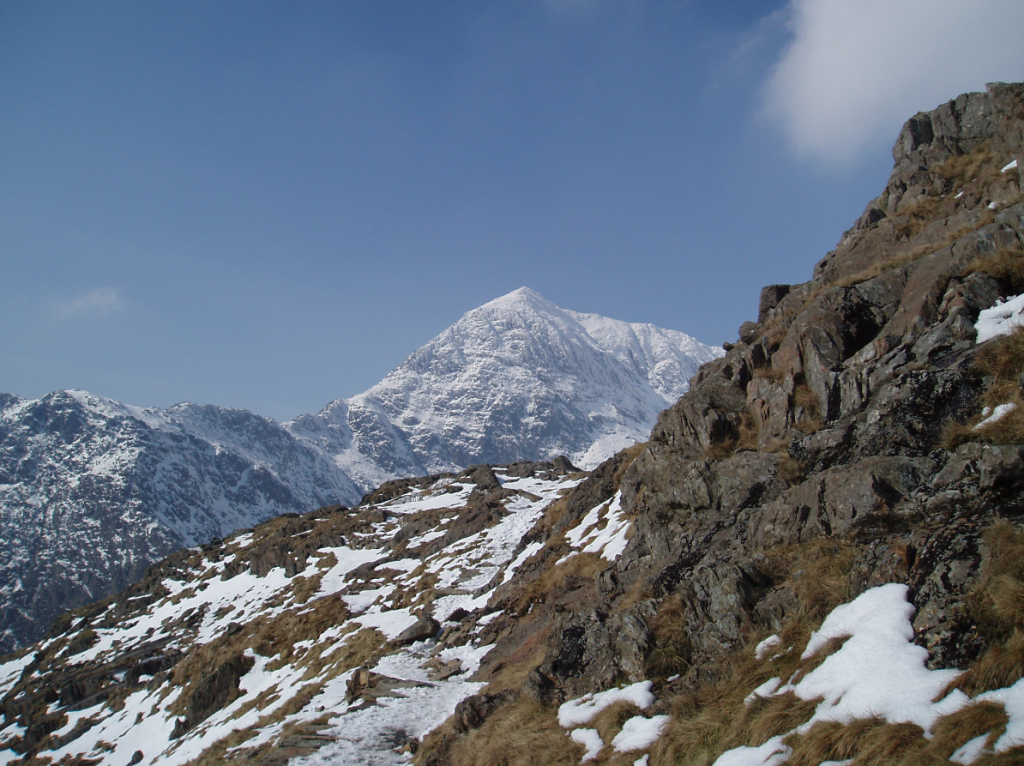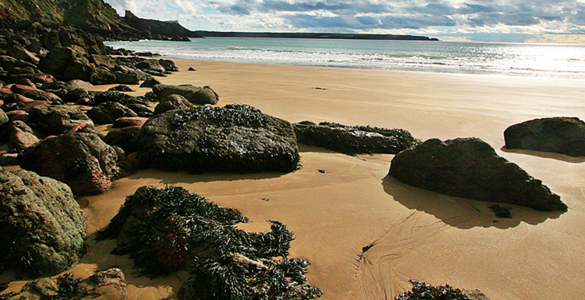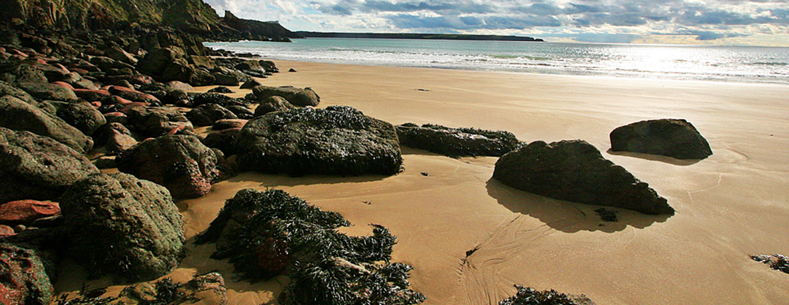The purpose of Designated Landscapes in Wales may be changing. This blog post explores the developments around the desired outcomes of National Parks and Areas of Outstanding Natural Beauty (AONB) ahead of a Welsh Government plenary statement on 13 March.
Background
Nationally important landscapes in England and Wales are designated as National Parks or Areas of Outstanding Natural Beauty (AONB) under the National Parks and Access to the Countryside Act 1949. Together these Designated Landscapes cover around 25% of Wales.
Wales is home to 4 AONB’s (Anglesey, Clwydian Range & Dee Valley, Llyn Peninsula and Gower – additionally the Wye Valley AONB spans England and Wales) and 3 National Parks (Brecon Beacons, Pembrokeshire Coast and Snowdonia). In 1952 Pembrokeshire Coast National Park was designated as the first coastal National Park in the UK, and in 1956 the Gower was designated as the first AONB in the UK.
The current management and purpose of National Parks and Areas of Outstanding Natural Beauty
National Parks have two statutory purposes as set out in National Parks and Access to the Countryside Act 1949:
- To conserve and enhance the natural beauty, wildlife and cultural heritage of their areas; and
- To promote opportunities for the understanding and enjoyment of the special qualities of their areas to the public.
Where conflict arises between these two statutory purposes, the National Park Authority is required to attach greater weight to the purpose of conserving and enhancing the natural beauty, wildlife and cultural heritage of the area under the ‘Sandford Principle’.
AONBs are areas designated for the purpose of conserving and enhancing their natural beauty and differ from National Parks in that they lack the statutory purpose to promote opportunities for the public to enjoy and understand the area. 
The Marsden Review
In light of the age of the legislation setting out the statutory purposes of the two designations (National Parks and Access to the Countryside Act 1949), in 2014 the Welsh Government commissioned a group of experts, led by Professor Terry Marsden, to undertake a Review of Designated Landscapes. Published in 2015, the ‘Marsden Review’ provided 69 recommendations. These included:
Recommendation 6: There should be three interlocking statutory purposes for both the National Parks ad AONBs.
- To conserve and enhance the distinctive landscape and seascape qualities of the area;
- To promote physical and mental well-being through the enjoyment and understanding if the landscape of the area; and
- To promote sustainable forms of economic and community development based on the management of natural resources and the cultural heritage of the area.
Recommendation 7: The Sandford Principle, confirming the primacy of the conservation purpose, will be applied across all the designated landscapes.
The Future Landscapes Working Group
Following the review, in the autumn of 2015, the then Minister for Natural Resources, Carl Sargeant, set up a Future Landscapes Working Group. Led by Lord Dafydd Elis-Thomas AM, the Working Group included representatives of the National Parks, AONBs, environmental groups, business and government officials, who explored the Marsden Review recommendations. It also considered the recommendations in the context of new legislation; the Well-being of Future Generations (Wales) Act 2015 and the Environment (Wales) Act 2016 and the evidence provided in the inaugural State of Natural Resources Report.
The Working Group published its report Future Landscapes: Delivering for Wales (the ‘Future Landscapes Review’) in May 2017.
The Future Landscapes Review – a report by the Future Landscapes Working Group
Proposition
The report sets out a new Proposition for Designated Landscapes to go beyond their current purposes relating to conservation and amenity value. It states that Designated Landscapes should be the drivers of the sustainable management of natural resources, providing wider public and private benefit. It emphasises the opportunity, through partnership working, to realise the economic potential of communities and promote green growth and the resilience of ecosystems through these landscapes.
Governance
A new way of working is proposed through governance arrangements that include a wide range of delivery and partnership models with a common vision. It also recommends that bodies and partnerships with responsibility for the Designated Landscapes should work across boundaries with Natural Resources Wales (NRW) and local partnerships to promote their social, cultural and economic value and sustainable use. The report states that partnerships would be required to attract new resourcing and influence investments by others. It stresses that this new way of working will require a behavioral and institutional change.
Action Plan
An 18 month action plan of first steps to realise the Proposition is contained in the report. It is divided into the following elements:
- collaboration and partnership;
- vision and direction;
- refreshing governance: improving performance and accountability;
- innovations in resourcing; and
- driving well-being and resilience.
Responses to the Future Landscapes Review
On publication of the review, the Cabinet Secretary for Environment and Rural Affairs, Lesley Griffiths said:
I thank the group for their work on this report. The next step is to deliver against the ambition, not in isolation, but together as part of the collaborative approach.
Whilst welcoming the review’s commitment to Designated Landscapes, the Snowdonia Society has criticised the report for its lack of clarity and lack of emphasis on the primary conservation purpose of these designations:
We searched the Future Landscapes document for the key words in National Parks’ existing purposes – ‘natural beauty’, ‘conservation’, ‘wildlife’, ‘cultural heritage’ ‘enjoyment’ ‘access’, ‘recreation’.
None of the words occurs in the body of the document.‘Conservation’ is the C-word spectacularly missing from the Future Landscapes document.
…It purports to summarise the detailed independent report produced by the Marsden panel in 2015…but fails to mention one of Marsden’s key recommendations – that the Sandford Principle must continue to apply, thereby ensuring that conservation remains the primary purpose of National Parks and AONBs.
Monmouthshire GreenWeb (a voluntary association of up to fifty environmental organisations) has also commented on the report stating that:
While there is reference to controversial topics such as tourism and renewable energy, the report is more concerned with matters such as governance, collaboration, monitoring change, sustainable land management and drawing on good practice.
Taking Forward Wales’ Sustainable Management of Natural Resources consultation
Following the Future Landscapes Review, the Welsh Government launched a consultation, Taking Forward Wales’ Sustainable Management of Natural Resources (which closed on 30 September 2017) which included proposals that followed from the review. The consultation’s proposals included:
- Aligning the statutory functions of the designations more clearly with the sustainable management of natural resources;
- Providing greater weight in decision making to the identified special qualities of the areas, which need to reflect a broad understanding of the importance of these areas;
- Enabling governance arrangements to evolve to reflect local circumstances; and
- Refreshing the way new areas can be recognised for their special qualities and their sustainable management.
Next steps
The Future Landscapes Review/ Taking Forward Wales’ Sustainable Management of Natural Resources consultation proposes a model for developing future public policies and drafting devolved legislation. It will be for the Welsh Government to look at whether legislation needs to be changed to support the recommendations of the review/consultation.
Article by Katy Orford, National Assembly for Wales Research Service






